So I used Selenium IDE to create a test case for some automation I want done. I want to be able to create some looping/flow control for this case so I figured I would need to export it out of Selenium IDE to something like Java (I'm most familiar with Java). I exported to Java/JUnit4/Web Driver. I think trying to execute the java file through Eclipse would work best, although if someone knows something easier, let me know. Anyway, I have found NO GOOD EXPLANATION on how to execute this Java through Eclipse.
Most things I read tell me to make sure my Build Path libraries includes the Selenium Standalone Server. Virtually all things I read tell me to use the Selenium Remote Control. However, I thought the RC was depreciated, and I am wondering if there is anyway to make it work with the more recent Web Driver stuff I downloaded from Selenium. Also, most things I read tell me I need to use public static void main(), which is a little awkward because I don't know how to alter the code the exported selenium gives me (obviously I can't just paste it all in the main method).
If anyone could walk me through from exportation of Selenium to Java to executing the code, I will be forever in your debt.
The code Selenium gives me: package com.example.tests;
package com.rackspace;
import java.util.concurrent.TimeUnit;
import org.openqa.selenium.Alert;
import org.openqa.selenium.By;
import org.openqa.selenium.NoAlertPresentException;
import org.openqa.selenium.NoSuchElementException;
import org.openqa.selenium.WebDriver;
import org.openqa.selenium.firefox.FirefoxDriver;
import org.openqa.selenium.support.ui.Select;
public class RackspaceContactAutomation {
private WebDriver driver;
private String baseUrl;
private boolean acceptNextAlert = true;
private StringBuffer verificationErrors = new StringBuffer();
@Before
public void setUp() throws Exception {
driver = new FirefoxDriver();
baseUrl = "https://cp.rackspace.com/Exchange/Mail/Contacts/List.aspx?selectedDomain=blahblahblah.com";
driver.manage().timeouts().implicitlyWait(30, TimeUnit.SECONDS);
}
@Test
public void testContactAutomationJava() throws Exception {
driver.get(baseUrl + "/Exchange/Mail/Contacts/List.aspx?selectedDomain=blahblahblah.com");
driver.findElement(By.linkText("Mr. Man")).click();
driver.findElement(By.linkText("Contact Information")).click();
new Select(driver.findElement(By.id("PhoneNumberType"))).selectByVisibleText("Mobile");
driver.findElement(By.id("MobilePhone")).sendKeys("999-999-9999");
new Select(driver.findElement(By.id("PhoneNumberType"))).selectByVisibleText("Fax");
driver.findElement(By.id("Fax")).sendKeys("999-999-9999");
driver.findElement(By.cssSelector("button.primary")).click();
}
@After
public void tearDown() throws Exception {
driver.quit();
String verificationErrorString = verificationErrors.toString();
if (!"".equals(verificationErrorString)) {
fail(verificationErrorString);
}
}
private boolean isElementPresent(By by) {
try {
driver.findElement(by);
return true;
} catch (NoSuchElementException e) {
return false;
}
}
private boolean isAlertPresent() {
try {
driver.switchTo().alert();
return true;
} catch (NoAlertPresentException e) {
return false;
}
}
private String closeAlertAndGetItsText() {
try {
Alert alert = driver.switchTo().alert();
String alertText = alert.getText();
if (acceptNextAlert) {
alert.accept();
} else {
alert.dismiss();
}
return alertText;
} finally {
acceptNextAlert = true;
}
}
}
This gives me 4 errors (3 for the annotations, which I could just delete, and one for fail in the tearDown() method. It's not the errors I'm concerned about so much the how do I make this code actually execute?
Thanks!
